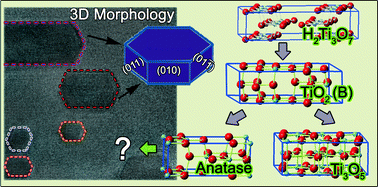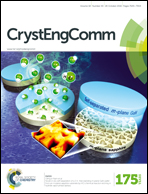In situ observation and investigation on the formation mechanism of nanocavities in TiO2 nanofibers†
Abstract
In this work, the formation and evolution mechanism of nanocavities generated on the surface of TiO2 nanofibers during the phase transformation were investigated through ex situ and in situ transmission electron microscopy and X-ray diffraction. The results indicate that the calcination atmosphere plays an important role in the morphology of the nanocavities. For the TiO2 nanofibers calcined in air, the nanocavities show a hexagonal prism morphology, which is related to the phase transformation from TiO2 (B) to anatase. Meanwhile, under vacuum conditions, the nanocavities exhibit an irregular shape due to the occurrence of phase transition from TiO2 (B) to Ti3O5. The difference in the morphologies of these nanocavities leads to the different surface areas of the nanofibers and further affects the photocatalytic activity. This work also illustrates that the phase transformation from anatase to rutile is not only related to the activation temperature, but also to the calcination atmosphere. Ultra-high vacuum may retard the transformation.


 Please wait while we load your content...
Please wait while we load your content...